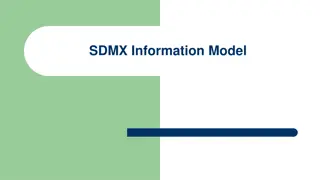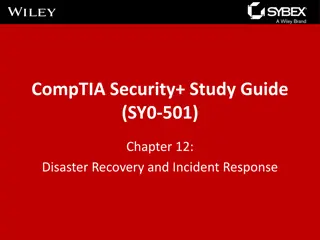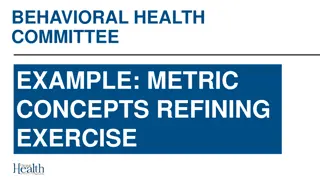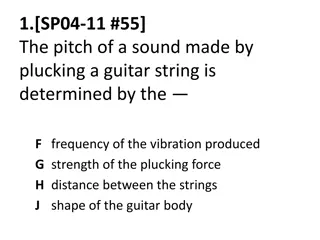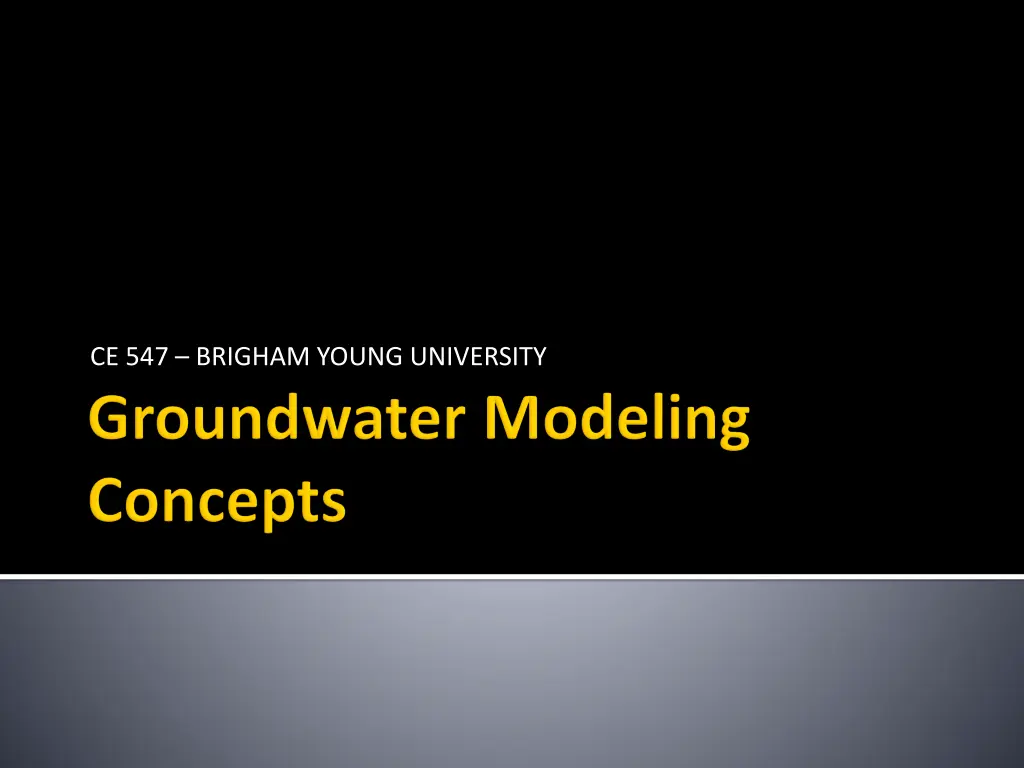
Hydrogeologic Modeling and Analysis Strategies
Explore the principles of hydrogeologic modeling, from conceptual model development to predictive and interpretive modeling techniques. Learn about the purpose of models, types of models, and the importance of simplifying complex systems for practical use.
Download Presentation

Please find below an Image/Link to download the presentation.
The content on the website is provided AS IS for your information and personal use only. It may not be sold, licensed, or shared on other websites without obtaining consent from the author. If you encounter any issues during the download, it is possible that the publisher has removed the file from their server.
You are allowed to download the files provided on this website for personal or commercial use, subject to the condition that they are used lawfully. All files are the property of their respective owners.
The content on the website is provided AS IS for your information and personal use only. It may not be sold, licensed, or shared on other websites without obtaining consent from the author.
E N D
Presentation Transcript
Predictive Used to make predictions based on hypothetical future scenarios Interpretive Used to gain a better understanding of an aquifer Generic Based on a simple classical case, rather than on a real system. Used for academic purposes
Define purpose of model Conceptual model development Code selection Data collection Model design Calibration Verification Prediction Postaudit Define Purpose 1. Field Data Conceptual Model 2. Code Selection *includes sensitivity analysis 3. 4. Field Data Model Design 5. Calibration* 6. Comparison with Field Data 7. Prediction* 8. 9. Field Data Postaudit Adapted from Anderson & Woessner, 1992
Types of models Interpretive Predictive How much accuracy is needed? How much $$ is available for study? How will answers be used? Define Purpose Field Data Conceptual Model Code Selection *includes sensitivity analysis Field Data Model Design Calibration* Comparison with Field Data Prediction* Field Data Postaudit
A high level description of the principal features of the system to be modeled Includes aquifer units, boundary conditions, sources, and sinks Parsimony - Keep the model simple enough to be manageable, yet complex enough to be useful Define Purpose Field Data Conceptual Model Code Selection *includes sensitivity analysis Field Data Model Design Calibration* Comparison with Field Data Prediction* Field Data Postaudit
Try to determine principal hydrogeologic units Hydrogeologic unit = zone that exhibits common hydraulic properties May include multiple geologic units
Does the code model all of the processes in the conceptual model? Use the simplest code possible in light of conceptual model and the purpose of the modeling study Has the code been thoroughly tested and verified? Define Purpose Field Data Conceptual Model Code Selection *includes sensitivity analysis Field Data Model Design Calibration* Comparison with Field Data Prediction* Field Data Postaudit
Well/borehole logs River/lake stages Pumping data Maps, aerial photos Elevations Observation well data Define Purpose Field Data Conceptual Model Code Selection *includes sensitivity analysis Field Data Model Design Calibration* Comparison with Field Data Prediction* Field Data Postaudit
Construct numerical model Find reasonable set of parameters and initial conditions Define Purpose Field Data Conceptual Model Code Selection *includes sensitivity analysis Field Data Model Design Calibration* Comparison with Field Data Prediction* Field Data Postaudit
Modify input parameters until model output matches field-observed values Observations Heads at wells Flows at sources/sinks (rivers, lakes) Can be automated in some cases with PEST utility Should include sensitivity analysis Define Purpose Field Data Conceptual Model Code Selection *includes sensitivity analysis Field Data Model Design Calibration* Comparison with Field Data Prediction* Field Data Postaudit
Calibrate to multiple sets of observation data if possible In each case, adjust boundary conditions and model stresses to be consistent with conditions present when observations were made Define Purpose Field Data Conceptual Model Code Selection *includes sensitivity analysis Field Data Model Design Calibration* Comparison with Field Data Prediction* Field Data Postaudit
Alter model, run simulation, and make predictions Can include stochastic analyses Define Purpose Field Data Conceptual Model Code Selection *includes sensitivity analysis Field Data Model Design Calibration* Comparison with Field Data Prediction* Field Data Postaudit
When possible, review the model in later years to determine accuracy of predictions Can be used to improve model Define Purpose Field Data Conceptual Model Code Selection *includes sensitivity analysis Field Data Model Design Calibration* Comparison with Field Data Prediction* Field Data Postaudit
One of the most insidious and nefarious properties of scientific models is their tendency to take over, and sometimes supplant, reality. Erwin Chargaff Quoted in J. J. Zuckerman, 'The Coming Renaissance of Descriptive Chemistry', Journal of Chemical Education, 1986, 63, 830. all models are approximations. Essentially, all models are wrong, but some are useful. George E.P. Box In George E. P. Box and Norman R. Draper, Empirical Model-Building and Response Surfaces (2007), 414.







